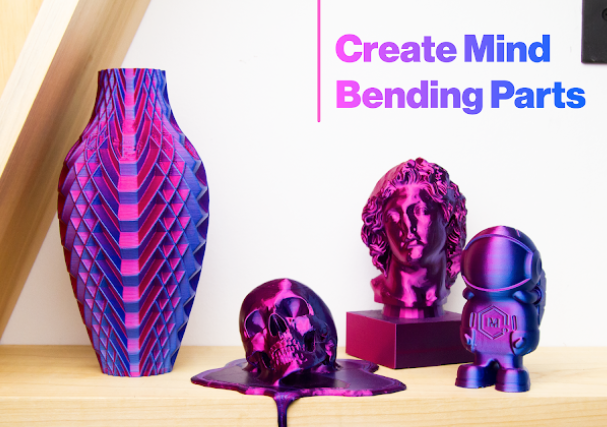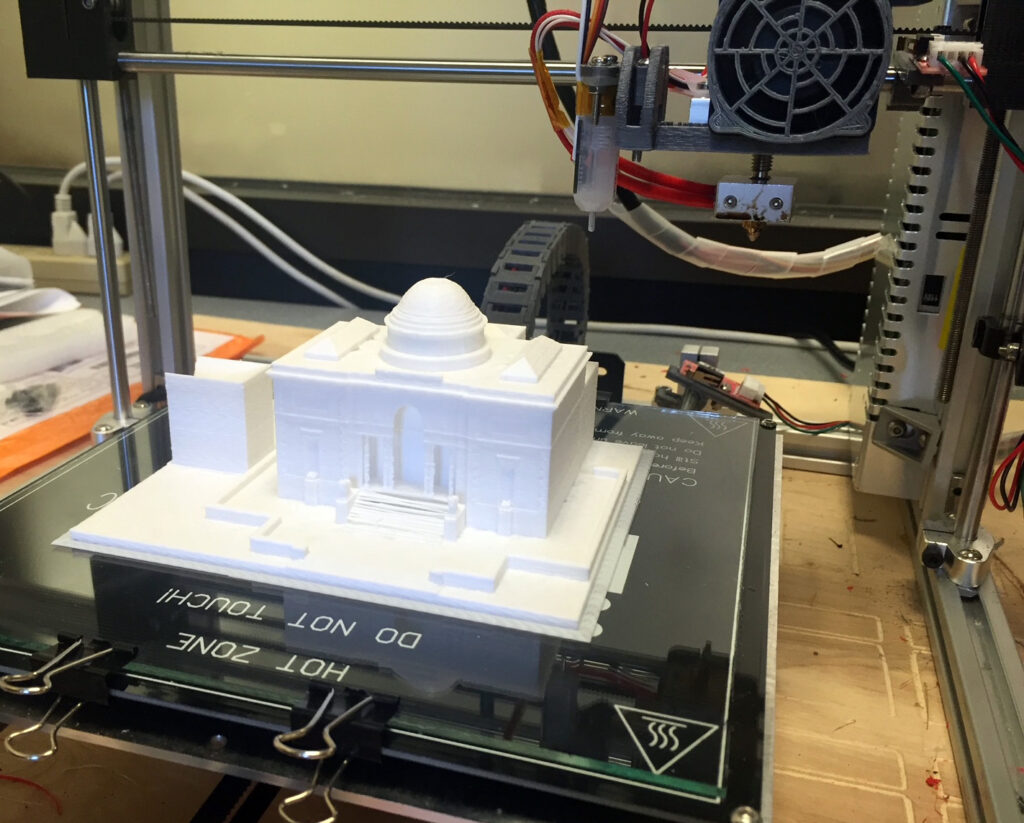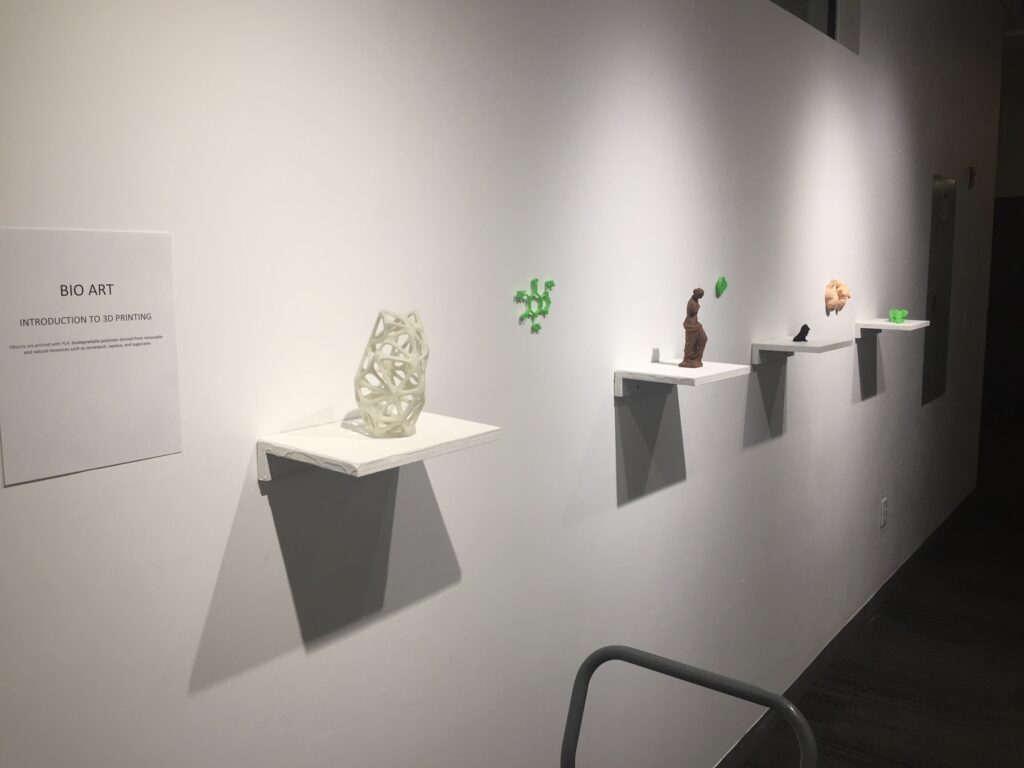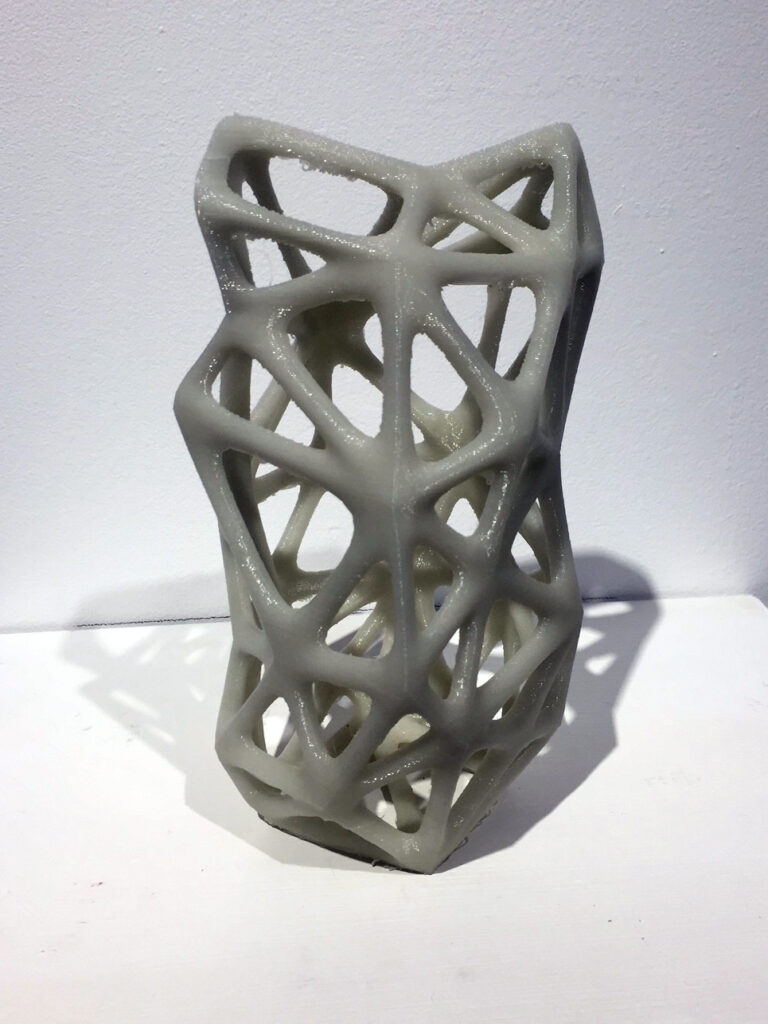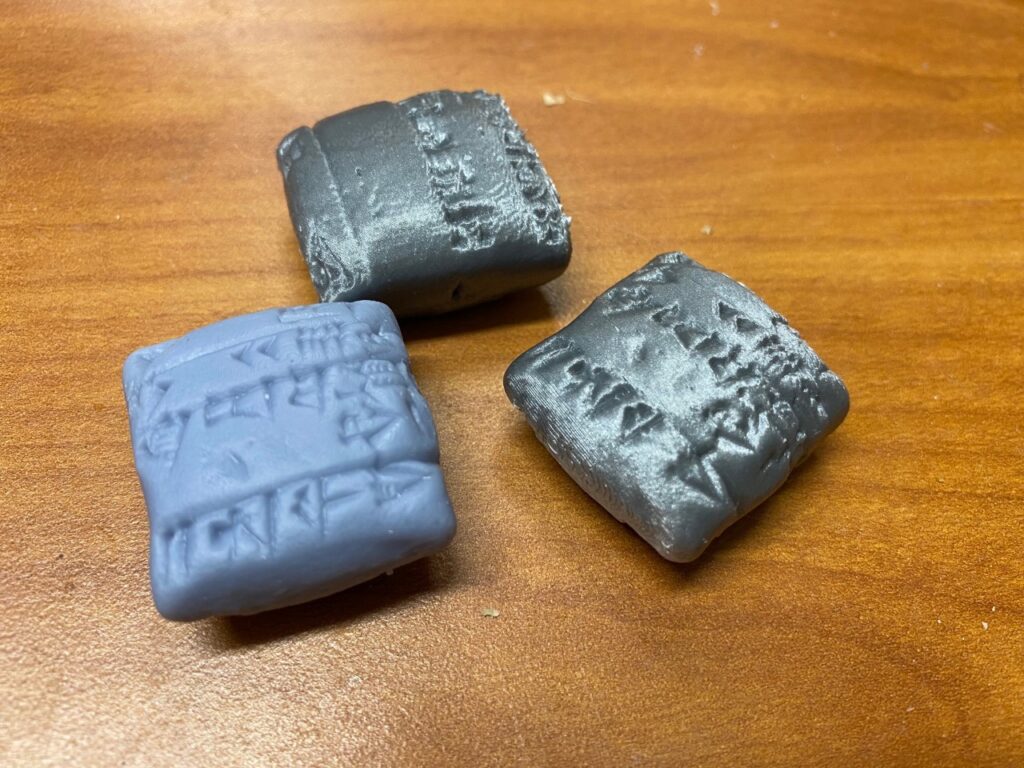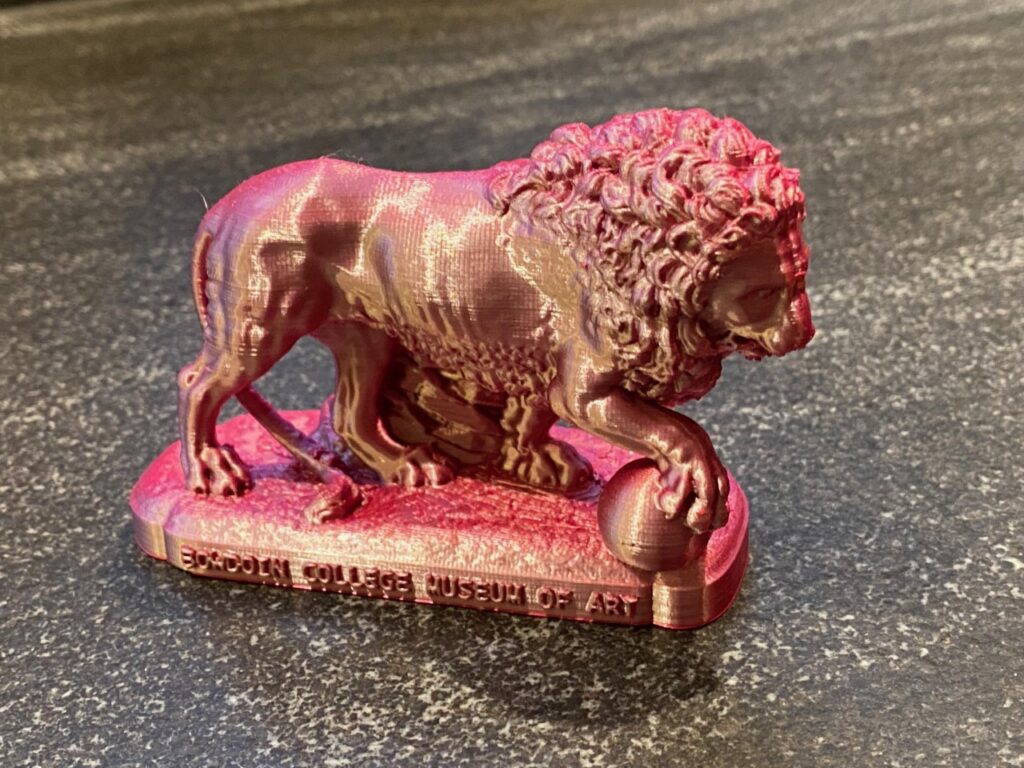We are working on an interesting project, partnering with the Peary-MacMillan Arctic Museum. We 3D scanned, and are now reproducing, a model sled for them at a slightly smaller scale than the original.
3D Prints
Model of the Bowdoin College Museum of Art
Bio Art Class
A while back we supported Professor Brown’s Bio Art class as they were introduced to 3D printing.
Clay Tablet with Cuneiform
When a Professor wanted to explore an object in the art museum with their course, but the students could not touch it (for obvious reasons – it is really old!) The Bowdoin Maker Space came to the rescue by creating a 3D scan of the object and then printing it in resin (SLA) and in PLA. So the students visited the Bowdoin College Museum of Art to view the original object under the watchful eye of the curator, and then were able to get a sense of the tactile object by interacting with the facsimiles that we created.
Bowdoin College Museum of Art Lion
Q: Who wants a museum lion?
A: Everybody!
The Bowdoin Magazine even wrote an article about how we scanned it to create the model: https://www.bowdoin.edu/news/2022/03/a-look-at-the-lions.html
This special lion was printed using Silver Raspberry MatterHackers Quantum PLA Filament